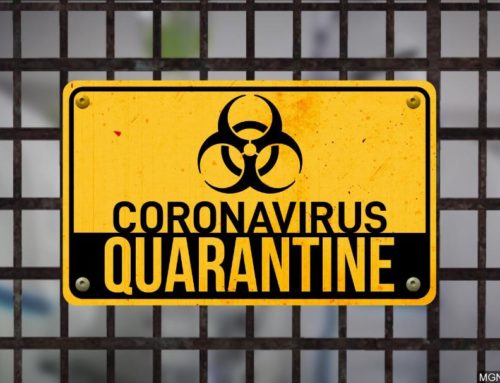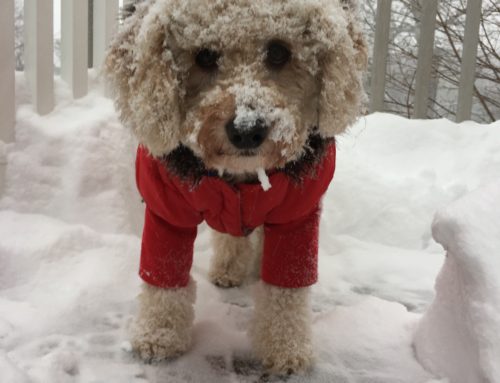If you’ve spent any time around the people or on the social media accounts here at Schulze Law, you know we are big pet fans (especially dogs…hey Brady!). We are constantly seeking to inform you of ways to keep yourself, family members and pets safe from dangers and harm. We’ve spent a lot of time reviewing summer safety and now it’s our beloved pets turn in the spotlight. With all the fun and sun, it can be easy to forget the dangers that our pets face in the summers. We all love spending the long, sunny days of summer outdoors with our furry friends, but being too eager in hot weather can spell danger. From hot asphalt to drowning risks, sunburns, and toasty cars, learn about important pet safety tips to follow this season.
Summertime means sun, beach, and lots of play outdoors with your dog or cat. It’s a perfect time to bond with your pet. But higher temperatures also mean higher risks for our beloved companions – more injuries, more skin and ear infections, and a possibility of a heat stroke.
With the help of Good Housekeeping, DVM Heather Loenser and Travis Lanaux, here are 30 ways to keep your pet safe from common summer dangers:
- Tossing them the cob.
Dogs love corn on the cob (yummy butter and salt!) but if they swallow a portion of the cob, it can get stuck in the stomach or intestines, explains Heather Loenser, DVM, a veterinary advisor with the American Animal Hospital Association. Always toss that cob in the trash.
- Leaving the temp too high.
Some animals, like chinchillas and rabbits, can get overheated indoors. If you’re traveling and leaving them at home, have someone check in periodically to feed them and make sure it hasn’t gotten too hot in the room,
- Letting them get at a shish kabob.
Your dog doesn’t know that the wooden stake left over from a chicken shish kabob isn’t food, says Travis Lanaux, DVM, clinical assistant professor at the College of Veterinary Medicine at the University of Florida. Hello, it tastes like chicken! Discard once the food is off the grill.
- Using unsafe fertilizers.
Opt for pet- and kid-safe products, but also make sure that the person applying these does so in appropriate areas and in appropriate amounts, and stash the bag somewhere safe.
- Leaving your dog in a hot car.
Never ever leave any pet in a parked car alone. There’s a greenhouse effect inside the car that can increase temperatures quickly — an animal can die in 5 minutes.
- Giving them gristle.
Grilled is good — but not for the pup. Eating gristle regularly can up a dog’s risk of pancreatitis.
- Letting them ride shot gun.
When you’re out and about on an adventure, have your dog ride in the back seat. In the front, they could get thrown against the car if you have to stop quickly.
- Using dog flea meds on cats.
Some owners accidentally apply the dog versions to their cat (not reading the label) or will use the same dog formula for their cat to save money. This can be fatal for your cat. Always use the appropriate products for cats and dogs.
- Forgetting to stock their airline crate.
Taking them on a far-from-home adventure? Just make sure their crate is stocked with everything they might need, including water — and even ice packs.
- Having a run in with an unfriendly pooch.
Just because a dog meets a new friend at a dog park doesn’t mean he’s friendly or well-socialized. Google “doggy body language.” Knowing what it really means when a pup wags his tail can help keep everyone safe.
- Leaving without a plan.
If you’re leaving an animal of any kind at home — even a lizard — develop a clear plan with someone you trust for how they’ll care for them should an emergency arise and they can’t get in touch with you. What’s reasonable vet care? Are there any financial limits for care?
- Feeding the potato chips.
Well-meaning party goers in your home may try to make fast friends with your feline by feeding her snacks. But salty foods like chips and popcorn, along with others like coconut, nuts and raw eggs can pose a variety of problems from excessive thirst and vomiting to food poisoning. For a full list of possibly poisonous foods, visit the ASPCA.
- Getting into feline feline fights.
Watch out for fights with wildlife and other cats. The bulk of hospital visits come from outdoor cats. (In the future, consider keeping indoor felines.)
- Chickens going thirsty.
It’s true: raising chickens is kind of trendy right now. Since the cluckers tend to kick their water bowl, make sure you visit them regularly and provide them with clean and fresh water.
- Gulping too much water.
If you’re playing at a beach with Fido and he drinks a large amount of salt water, the sodium levels in his body can rise, causing vomiting and seizures. Fresh water lakes and rivers, on the other hand, can cause sodium levels to drop too far, leading to unconsciousness. Always bring a fresh supply of water and make pets rest.
- Not being able to find an animal hospital.
Everything will probably be fine if you’re taking your pet on vacation with you, but in case of an emergency, you want to know where to go. Head to AAHA.org/Locate to find an animal hospital accredited by the AAHA.
- Forgetting heartworm medications this month.
Not everyone picks up after their dogs at the dog park, and that poop can contain parasites if the pooch isn’t dewormed. The monthly heartworm meds you give them also kills any intestinal parasites. Don’t skip a dose!
- Trying a tough hike.
Heat exhaustion and heat stroke are two common problems with dogs in summer. Your dog may not be acclimated to the heat, making a three-mile hike dangerous. Build up their stamina outdoors in warmer weather gradually.
- Jumping into a pool.
Even if your pup’s a championship swimmer, he may not be able to get out of the pool on his own. Stay around the area and keep an eye on him so you can all have some safe summertime fun.
- Walking on hot asphalt.
You know what it’s like when you step in bare feet on asphalt in the middle of a sunny day? Scorching. Keep their paws protected from painful burns by walking on grass or sidewalks and keeping strolls short when it’s steamy out.
- Letting the tank heat up.
Even your fish can get overheated. You don’t want their fish tank to turn into a hot tub. Monitor the water temp too.
- Using bug spray on them.
Don’t apply human bug sprays to your furry friends. DEET can be toxic to dogs. Use the dog flea and tick medication you get from your vet.
- Running around the grill.
Keep an eye on your pup around a hot grill and barbeque— all they know is that the smells wafting from that thing are delicious. Don’t trust that they know those things burn at hundreds of degrees.
- Displaying lilies around the house.
Every part of these — the leaves, pollen and water they grow in — can be toxic to cats and cause kidney failure. Don’t keep lilies in a vase if you have an indoor cat and don’t grow them outside in your yard.
- Opening your windows.
There’s an actual condition cats suffer called “high rise syndrome,” a set of injuries sustained from falling out open windows. Keep screens on your windows and make sure they’re secure.
- Dropping a peach pit by accident.
Peach and avocado pits aren’t high on a dog’s must-eat list, but they can be accidentally swallowed too. Make sure that when you finish your fruit, you discard the pits pronto.
- Lagging on vaccinations.
If your dog is super social — especially in the summer — he’ll need to be up-to-date on rabies, distemper, parvovirus and influenza (both strains) and Bordetella. Check out the AAHA and American Veterinary Medical Association’s vaccination guidelines.
- Planting a sago palm.
Dogs are especially vulnerable to this plant, and can have liver failure if they ingest it, says Lanaux. Because pups can be unpredictable, you’re better off getting rid of this if you have it in your yard. For a list of plants poisonous to dogs, cats and horses, visit the ASPCA.
- Using snail bait.
If you use these in your veggie garden to poison slugs and snails, know it can also poison your dog. “It can cause tremors that progress to seizures and heat stroke,” says Lanaux. Even watch out for those considered safe for pets.
- Blanking on sunscreen.
White-nosed dogs and cats (or any white pigmented pet, really) are just like us; they can get sunburns as well as skin cancers. Luckily, you can find pet sunscreens online
The summer months can present hazards for our pets so it is important to be vigilant and extremely careful. The dangers may all sound a little bit scary, but with some thought and consideration, you can relax and enjoy the summer with your furry friends and pets!
https://www.petcarerx.com/
https://www.care.com/
https://www.wcvb.com/article/pet-safety-tips/
https://www.goodhousekeeping.com/






